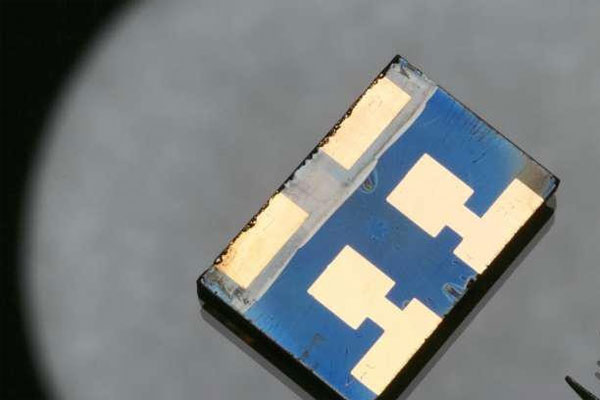A perovskite solar cell developed by engineers at the University of California San Diego brings researchers closer to breaking the ceiling on solar cell efficiency, suggests a study published Aug. 10 in Nature.
The new solar cell is a lead-free low-dimensional perovskite material with a superlattice crystal structure—a first in the field. What’s special about this material is that it exhibits efficient carrier dynamics in three dimensions, and its device orientation can be perpendicular to the electrodes.
So far, materials in this particular class of perovskites have only exhibited such dynamics in two dimensions—a perpendicularly orientated solar cell has never been reported.
Thanks to its specific structure, this new type of superlattice solar cell reaches an efficiency of 12.36%, which is the highest reported for lead-free low-dimensional perovskite solar cells (the previous record holder’s efficiency is 8.82%). The new solar cell also has an unusual open-circuit voltage of 0.967 V, which is higher than the theoretical limit of 0.802 V. Both results have been independently certified.
The open-circuit voltage is a solar cell property that contributes to its efficiency, so this new solar cell “may have the potential to break the theoretical efficiency limit of current solar cells,” said study senior author Sheng Xu, a professor of nanoengineering at the UC San Diego. “This might one day allow us to achieve higher efficiency with more electricity from existing solar panels, or generate the same amount of electricity from smaller solar panels at lower costs.”
The researchers hypothesize that the material’s improved open-circuit voltage might be attributed to a new physical mechanism that they call intraband carrier relaxation. The material’s unique superlattice structure allows different components of the solar cell to integrate in the vertical direction, which creates an atomic-scale double band structure.
Under light, the excited electrons could relax from one component (smaller bandgap region) to another component (larger bandgap region) before equilibrating to alter the fermi levels in the superlattice solar cell. This contributes to a higher open-circuit voltage.
This process is verified to be related to the built-in potential in the superlattice solar cell. The researchers also acknowledge that other possible mechanisms in the unique superlattice structure might contribute to its unusually high open-circuit voltage.
The researchers used chemical epitaxy techniques to fabricate a superlattice crystal network to create the new lead-free low-dimensional perovskite solar cell. The network’s structure is unique in that it consists of perovskite quantum wells that are vertically aligned and crisscrossed. This crisscrossed structure makes the material’s carrier dynamics—which include electron mobility, lifetime and conduction paths in all three dimensions—more efficient than just having multiple quantum wells. These techniques can potentially be used to create perovskite superlattices of different compositions.
“This perovskite superlattice demonstrates an unprecedented carrier transport performance that many researchers in the field have dreamed about,” said Yusheng Lei, the lead author of this paper, who was a Ph.D. student in Xu’s lab at UC San Diego and is now a postdoctoral researcher at Stanford University.
The superlattice consists of a nanoengineered phase separation between Bi3+ alloyed and intact Sn-I regions in vertically aligned multiple-quantum-wells. The researchers explained that this composition creates component variations in the atomic scale, enabling hot carriers to quickly cross the multiple-quantum-wells heterostructural interface before they relax–a feat that is usually impossible to achieve. Here, it is possible because of the short diffusion length required to cross the heterostructural interface.
“This work opens up a lot of new exciting potential for the class of lead-free low-dimensional perovskite materials,” said Xu. Moving forward, the team will work on optimizing and scaling up the fabrication process to make the superlattice crystals, which is currently still laborious and challenging. Xu hopes to engage partners in the solar cell industry to standardize the process.
—
Publication Referenced in the Article:
Yusheng Lei et al, Perovskite superlattices with efficient carrier dynamics, Nature (2022). DOI: 10.1038/s41586-022-04961-1
—
This article was written by University of California – San Diego.














Comments